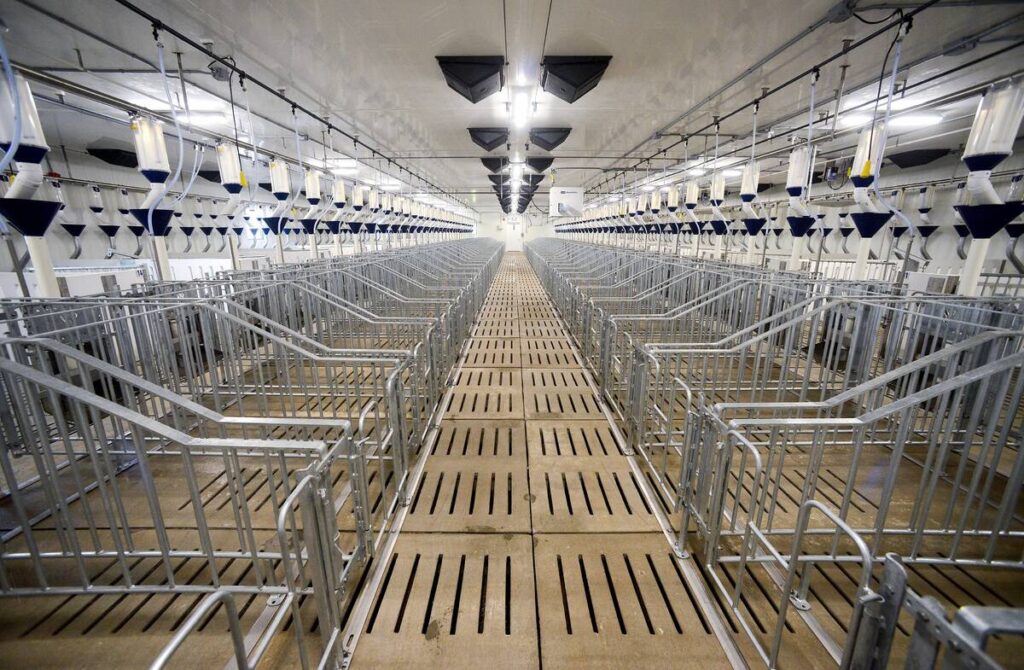Pigs have their say when setting the temperature

There’s still no compelling evidence pigs can fly — but they can operate a thermostat.
That’s according to a recent study, funded by the Saskatchewan Pork Development Fund for the Prairie Swine Centre, which could mean lower energy costs for farmers in their gestation and grow-finish barns.
The project, ongoing since 2017, uses a mechanism to allow sows to control room temperatures. Two trials led to a 39 per cent reduction in electricity and 53 per cent reduction in natural gas consumption.
Read Also


Food inspection could fall victim to U.S. deregulation move
A new policy paper warns Canadian agriculture to prepare for changing U.S. domestic policies that seek efficiencies through deregulation.
Bernardo Predicala, a research scientist at the Prairie Swine Centre, presented his findings at a producer meeting in Lethbridge last month.
Sows were allowed to huddle in group housing with a switch they could hit to control the room’s temperature. A similar device has been used successfully with chickens and cattle.
When sows hit the switch, the heater activated, raising temperature by a degree, on a timed interval. There was also a dummy switch that didn’t control the heater, to determine if the action was just habit or was intended to control temperature.
The researchers discovered that there were leaders within the group of sows, and they wanted to turn the heat down.
“Of the room of 40 sows, actually only about five sows were doing most of the activations of the switch and the rest kind of waited for the others to do the pressing for them,” said Predicala.
The numbers also showed that these sows quickly figured out which switch had the desired effect, and that the dummy switch was sidelined.
Two rooms were compared: one with a typical set point of 16.5 C and the other room where sows set the temperature, which ended up hovering around 10 to 12 C over a six-week period that had outside winter season temperatures ranging from -5 C to -20 C.
The sows maintained temperatures five to eight degrees on average lower than typical set points. Results showed no adverse effects on sow performance, including reproductive metrics and growth such as daily gains, feed intake, thyroxine levels, liveborn, stillborn and mummified losses.
In the grow-finish trial of 25-pound pigs, a shorter three-week time frame was established with similar treatment of two pens.
The study tracked the number of switch activations at certain temperatures. There were significantly less switch activations at 16 C, with activations growing in frequency once lower temperature thresholds were reached. Temperatures around 10 to 11 C showed the highest number of activations.
“They are pressing more at this temperature. They do not allow the temperature to go lower than that,” said Predicala.
The numbers demonstrated this. At 16 C, the pigs activated the switch just 468 times. Between 10 and 12.5 degrees, they activated it roughly 60,000 times, Predicala said.


Research discovers that pigs were less aggressive under cooler conditions. Photo: File Pigs have their say when setting the temperature
“That’s how we determine their preferred environmental temperature,” he said.
Researchers now plan to conduct full-scale grow-finishing tests in the future after completing the chamber tests.
One livestock veterinarian taking in the presentation expressed surprise at the difference, noting the industry norm is having temperatures around 18.5 C in a grow-finish room.
Grow-finish pigs can comfortably withstand temperatures as low as 10 C with no adverse impact, Predicala said.
During the question period, a farmer asked if there were any changes in the aggression levels in the animals, and Predicala said it actually helped their comfort levels.
“Even from the first trial we conducted, they were actually a little more relaxed because it was cooler,” said Predicala.
“Any aggression we saw was pre-determined before in the group where a hierarchy was already established.”
Source: producer.com


